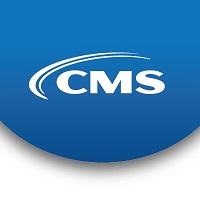 A New Medicare Coverage Pathway for Emerging Technologies and Revamped Evidence Development Framework
A New Medicare Coverage Pathway for Emerging Technologies and Revamped Evidence Development Framework
By Lee Fleisher, MD, Steve Farmer, MD, PhD, Lori Ashby, MA, and Jonathan Blum, MPP, Centers for Medicare & Medicaid Services
Twitter: @CMSGov
The Centers for Medicare & Medicaid Services (CMS) is committed to fostering innovation while ensuring that people with Medicare have faster and more consistent access to emerging technologies that will improve health outcomes. As part of this commitment, CMS announced a proposed Transitional Coverage for Emerging Technologies (TCET) pathway. This announcement includes a proposed procedural notice and several proposed guidance documents that propose a substantial transformation to our approach to coverage reviews and evidence development.
The proposed procedural notice outlines the new expedited Medicare coverage pathway. The TCET pathway, which is voluntary and applies to certain FDA-designated Breakthrough Devices, supports innovation by providing an efficient, predictable, and transparent coverage review process while developing robust safeguards for the Medicare population. The new pathway provides manufacturers with opportunities for increased pre-market engagement with CMS and a new and unprecedented level of flexibility to address any evidence gaps for coverage. The goal of the TCET pathway is to develop reliable evidence for patients and their physicians to make health care decisions and ensure that people with Medicare receive high-quality care.
The TCET pathway uses national coverage determination (NCD) and coverage with evidence development (CED) processes to expedite Medicare coverage of certain Breakthrough Devices. TCET aims to reduce uncertainty about coverage options through a pre-market evaluation of potential harms and benefits of technologies while identifying any important evidence gaps. In addition, the TCET pathway will help coordinate benefit category determination, coding, and payment reviews. Finally, TCET allows manufacturers to address any evidence gaps through fit-for-purpose studies. A fit-for-purpose study is one where the study design, analysis plan, and study data are appropriate for the question the study aims to answer. CMS believes that fit-for-purpose study designs will be more convenient for manufacturers because many of these studies may use data already collected through care delivery.
TCET incorporates the following features:
- TCET applies to certain FDA-designated Breakthrough Devices that fall within a Medicare benefit category.
- Manufacturer participation in the TCET pathway is voluntary.
- CMS may conduct an early evidence review (Evidence Preview) before FDA decides on marketing authorization for the device and discuss with the manufacturer the best available coverage pathways depending on the strength of the evidence.
- Before FDA marketing authorization, CMS may initiate discussions with manufacturers about any evidence gaps for coverage purposes and the types of study designs that could address them. The manufacturer may then propose an Evidence Development Plan (EDP). As part of the EDP development process, CMS will work with manufacturers to efficiently meet both CMS evidence development and FDA post-market requirements.
- For Breakthrough Devices in the TCET pathway, CMS’ goal is to finalize a TCET NCD within six months after FDA market authorization. We intend to have coverage under the TCET NCD continue only as long as is needed to facilitate the timely generation of evidence that can inform patient and clinician decision making and lead to a predictable, long-term Medicare coverage determination.
When developing the TCET pathway and new evidence development framework, CMS solicited extensive feedback from patient groups, medical professionals, device manufacturers, innovators, and other Federal agencies. This feedback included requests for CMS to use a more agile, iterative evidence review process that considers fit-for-purpose study designs, including those that make secondary use of real-world data. CMS partnered with the Agency for Healthcare Research and Quality (AHRQ) to develop a comprehensive approach that incorporates greater flexibility into the proposed CED paradigm and allows fit-for-purpose study designs. CMS will continue to engage with stakeholders to ensure that Medicare promotes access to emerging medical technologies while maintaining the protections and rigorous evidence standards essential to the health of Medicare beneficiaries.
In addition to the TCET procedural notice, CMS issued newly proposed criteria in an updated Coverage with Evidence Development guidance document based on the November 2022 AHRQ Report and February 2023 MEDCAC, as well as National Coverage Analysis Evidence Review guidance to more clearly allow fit-for-purpose study designs. The public will have 60 days to provide comments on the TCET procedural notice and proposed CED and Evidence Review guidance documents. Additionally, CMS published the first in a series of guidance documents that review health outcomes and their clinically meaningful differences within priority therapeutic areas. The public will also have 60 days to provide comments on this guidance document. Also, CMS expects to publish more detailed fit-for-purpose guidance later this year, and the public will have an opportunity to provide comments on this document. Finally, CMS will soon announce the opening of an NCD pilot that will incorporate aspects of the new evidence development framework outlined in the TCET procedural notice and guidance documents.
View procedural notice for the TCET pathway.
View the CMS guidance documents.
View a Fact Sheet on the TCET pathway.
This article was originally published on the CMS Blog and is republished here with permission.
